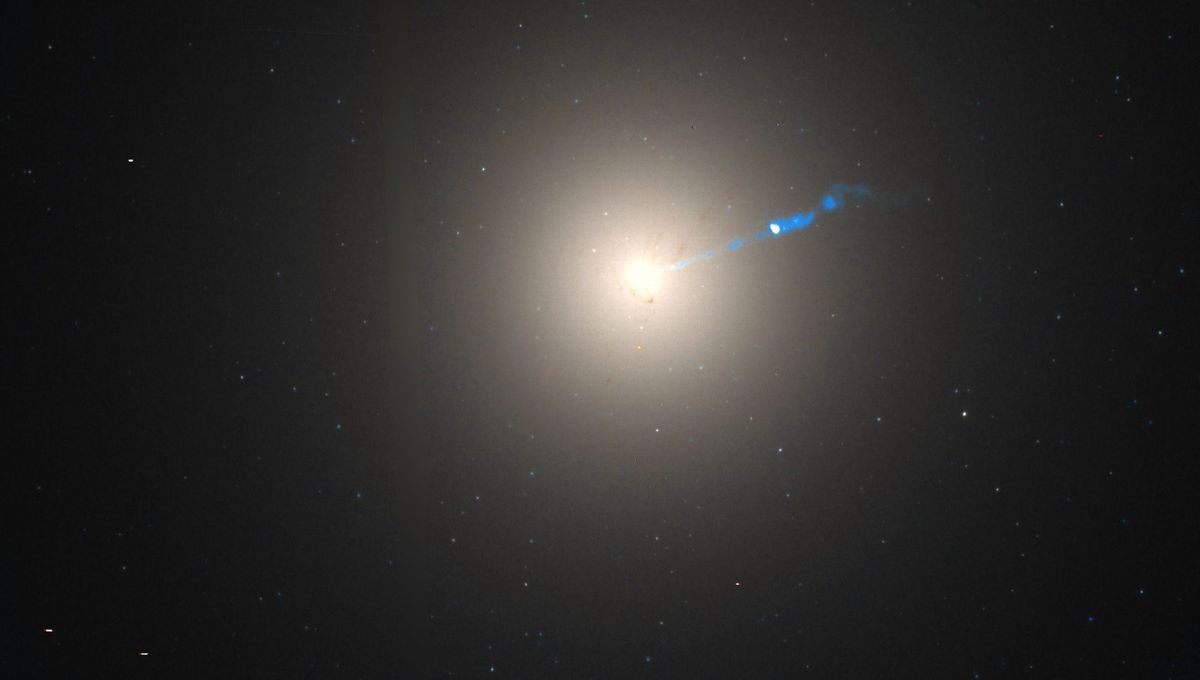
It has been a bit month for M87 and its supermassive black hole (M87*). Recent observations have revealed even more about this gargantuan cosmic object and its host galaxy, and astronomers have been able to better understand the shape of this galaxy. It turns out it is shaped like a potato.
When looking through a telescope, M87 doesn’t look like much. It is an elliptical galaxy, so it doesn’t have spiral arms, and its stars don’t rotate on a thin disk like in the Milky Way. But the distribution of its stars affects several measurements we have of it – including how big its supermassive black hole is.
Assumptions were that the galaxy was shaped like a rugby ball: two axes of roughly the same size and the other being longer, with that axis being the one visible in the observations of this galaxy. But new measurements have looked at the motion of stars from the center of the galaxy all the way out to 40,000 light-years away.
The team of researchers found that in the outer part of the galaxy, the stars are moving around at about 25 kilometers per second (15.5 miles per second). Quite slow as stars go, the Sun goes almost 10 times as fast. The axis of rotation is misaligned to the visible one by about 40 degrees, suggesting that the galaxy has three axes of different lengths – so it’s more like a russet potato and less like a rugby ball.
M87 is 53 million light-years away, and so observations don’t pick out individual stars. But to work out how they are all moving, you don’t need that.
“It’s sort of like looking at a swarm of 100 billion bees that are going around in their own happy orbits,” Chung-Pei Ma, a UC Berkeley professor of astronomy and of physics who led the research team, said in a statement. “Though we are looking at them from a distance and can’t discern individual bees, we are getting very detailed information about their collective velocities. It’s really the superb sensitivity of this spectrograph that allowed us to map out M87 so comprehensively.”
From the analysis, the galaxy’s shortest axis is about 72.2 percent the length of its long axis, while the intermediate axis 84.5 percent.
The mass of the black hole is 5.37 billion times the mass of the Sun. Smaller than the estimate from the Event Horizon Telescope – which provided the first-ever image of a black hole by snapping M87*, recently sharpened with AI. The supermassive black hole is actively launching jets into intergalactic space – another recent study shows the first video of the jet release taking place. There is still much to learn about the black hole, such as its spin, though. Thanks to this work, researchers are getting closer to that.
“Now that we know the direction of the net rotation of stars in M87 and have an updated mass of the black hole, we can combine this information with the amazing data from the EHT team to constrain the spin,” Ma said. “This may point toward a certain direction and range of spin for the black hole, which would be remarkable. We are working on this.”
The results are published in The Astrophysical Journal Letters.
Source Link: 3D View Of Famous M87 Galaxy Reveals It Resembles A Very Big Potato